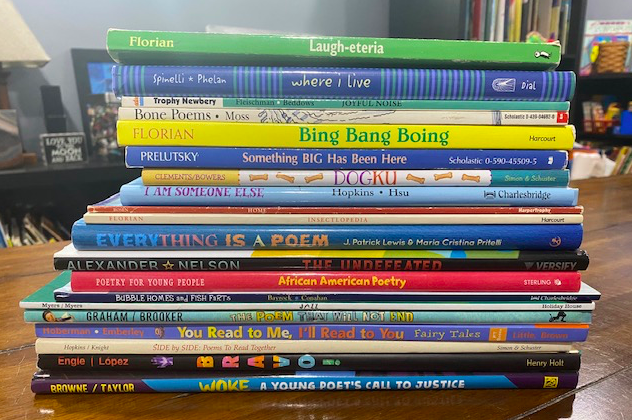Co-planning a Mini-Unit to Wrap Up the Year with JOY!
I’ve had the pleasure of knowing and working with Shannon for the last few years. We share a common love of books and we are both self-proclaimed pen snobs — meaning we are both “pen-picky” and enjoy trying to convince one another that our favorite pen type is the best. Shannon is a continual learner — with an ongoing stream of inquiry. She’s a joy to co-plan with because she exudes happiness as she noodles ideas, thinks through wonderings, and creates ways to support her students — and her learning community — in collaborative, heart-felt ways.
A DISCLAIMER OF SORTS
A few shared agreements:
As I co-plan with teachers, I’m not going to spend much time, if any, editing the videos. This means it might be clunky at times. You might get a barking dog, tech glitches, or family interruptions. I hope you’ll be able to relate. Thank you, in advance, for assuming best intentions and for your understanding. In addition, not everything we do together is recorded.
The ideas shared in these videos are NOT “the way” or “the right way” -- they are just one way to approach the work. I hope you’ll spend some time actively studying the co-planning conversation. As you listen, take stock of the ASSETS that emerge from the conversation. Think about:
What’s the WHY behind our work?
What moves are we trying to make in service of students?
Name the implications for your work going forward. What might you adopt or adapt to fit your setting, interests, and/or needs?
Focus on process versus end product. The work will continue to unfold even if it’s not captured on video segments. If you check back into our shared documents, you’ll notice changes because our work is dynamic, not static, and will evolve across time.
HERE’S WHAT WE ARE UP TO
Shannon’s students have settled into a learning from home routine and are launching into their 8th week. Each week brings about new celebrations and new challenges.
Shannon wants her students to end the year with a mini-poetry unit, celebrating reading and writing!
THINGS WE ARE THINKING ABOUT NOW
How do the enduring practices we use in the classroom translate -- or not -- to remote/digital learning from home?
What’s the WHY behind this mini-poetry unit?
What’s going to get kiddos jazzed up about reading and writing poetry?
What end demonstrations or learning celebrations can we co-create with students to honor their work?
VIDEO
If you are interested in watching a coach and teacher co-plan — working as THINKING PARTNERS in response to the unique times we are currently experiencing — check out this video.
SOME REFLECTIONS
What poem types will be new/unfamiliar to students? What poem types will feel like “old friends”?
Will students write poetry on paper or on the computer? They have options so I’m wondering what they will choose?
Will students illustrate some of the poems they write?
Is there a way to help students collect all of the poems they are reading and writing [a binder or folder] to keep them organized at home? If so, maybe they could be used to inspire reading/re-reading poetry over the summer.
OTHER LINKS & RESOURCES
Our DRAFTY, dynamic, in-motion, evolving plans: Julie & Shannon: Co-planning Mini-Poetry Unit
Small Group Plans: Small Group Reading & Writing Lesson Plans to Adopt, Adapt or Improve [During Remote/Distance Learning]
Short Texts at Your Fingertips: Poetry
If you want to learn more about Shannon’s classroom, check out her blog!
IDEAS TO CHEW ON
As most educators would agree, working from a distance is not the same as in-person experiences. In my work as a consultant, it’s not unusual for me to work across the miles with teachers. In fact, most of my consulting contracts include some form of this type of professional learning, particularly as we prepare for our work together in the classroom. Planning and working across the miles is how we often get a jump-start to our work together. The difference, of course, is the work we are typically planning is NOT from a distance. So, that is where we are trying to make a shift.
I’m in good company when I say we are all kind of tired of this by now. However, with so many unknowns about what school will — or should — look like in the fall, we are using this spring as a dress rehearsal of sorts. We are asking:
What’s working? What’s clunky?
Who are we reaching and supporting in ways that are making a difference?
Who are we concerned about? What don’t we know that we should know?
How will we stay connected and minimize the “distance” that separates us?
How will we create compelling, sophisticated learning experiences that take into account our foundational beliefs and practices in ways that nature and inspire students?
Two pieces I’ve recently written that might be of interest are:
Until next time — keep at it! You’ve got a whole crew of educators cheering you on because we know the spirit and camaraderie surrounds us all! Reach out if you’d like to chat about ways I might be of service and support your efforts!




